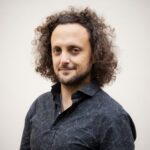Lien vers Pubmed [PMID] – 22748209
Am. J. Hum. Genet. 2012 Jul;91(1):27-37
Host-pathogen interactions are generally initiated by host recognition of microbial components or danger signals triggered by microbial invasion. This recognition involves germline-encoded microbial sensors or pattern-recognition receptors (PRRs). By studying the way in which natural selection has driven the evolution of these microbial sensors in humans, we can identify genes playing an essential role and distinguish them from other, more redundant genes. We characterized the sequence diversity of the NOD-like receptor family, including the NALP and NOD/IPAF subfamilies, in various populations worldwide and compared this diversity with that of other PRR families, such as Toll-like receptors (TLRs) and RIG-I-like receptors (RLRs). We found that most NALPs had evolved under strong selective constraints, suggesting that their functions are essential and possibly much broader than previously thought. Conversely, most NOD/IPAF subfamily members were subject to more relaxed selective constraints, suggesting greater redundancy. Furthermore, some NALP genes, including NLRP1, NLRP14, and CIITA, were found to have evolved adaptively. We identified those variants conferring a selective advantage on some human populations as the most likely targets of positive selection. More generally, the strength of selection differed considerably between the major families of microbial sensors. Endosomal TLRs and most NALPs were found to evolve under stronger purifying selection than most NOD/IPAF subfamily members and cell-surface TLRs and RLRs, suggesting some degree of redundancy in the signaling pathways triggered by these molecules. This study provides novel perspectives and experimentally testable hypotheses concerning the relative biological relevance of the various families of microbial sensors in humans.


